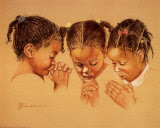
"Let us consider our place in sight of God and of his angels. Let us rise in chanting that our hearts and voices harmonize."
"For what page or word of the Bible is not a perfect rule for temporal life?"
"For just as from the heavens the rain and snow come down and do not return there till they have watered the earth, making it fertile and fruitful, giving seed to him who sows and bread to him who eats, so shall my word be that goes forth from my mouth; It shall not return to me void, but shall do my will, achieving the end for which I sent it" (Isaiah 55:10-11).
"Immediately upon hearing the signal for the Divine Office all work will cease."
Benedict believed with Jesus that "One does not live by bread alone, but by every word that comes forth from the mouth of God' " (Matthew 4:4).
https://www.catholic.org/saints/saint.saint_id=26
During his life, Saint Benedict performed many miracles. He found water on a desolate mountaintop to quench the thirst of his monks. He retrieved a bill hook’s iron from the bottom of a lake and rejoined its handle. He prevented a monk from leading a dissolute life through intervention. In addition, he made Maurus walk on water to save the young Placidus from drowning.
...
In the period between 525 and 529 AD he founded the Abbey of Montecassino. It would become the most famous abbey in continental Europe. Under Benedict’s direction, the old acropolis-sanctuary towering above the declined Roman municipium of Casinum was turned into a monastery that was much bigger than those built at Subiaco. On the remains of the altar of Apollo he built a chapel dedicated to Saint John the Baptist, while the temple of Apollo itself was turned into an oratory for the monks which was dedicated to Saint Martin of Tours.
He brought back from death a youngster, miraculously supplied the monastery with flour and oil in its time of need and displayed the gift of prophecy. In autumn of 542 AD, while the Goth King Totila was passing through Cassino en route to Naples to attack it, he decided to test Saint Benedict because he had already heard of his gifts and charisms. As a consequence, Totila sent his squire dressed as a king to greet the monk; but Saint Benedict soon unmasked him. When he finally met Totila, he warned him with a dire prediction: “You have hurt many and you continue to do it, now stop behaving badly! You will enter Rome, you will cross the vast sea, you will reign for nine years; however in the tenth year, you will die.” And that is exactly what happened. Saint Benedict showed the same virtue as he cried bitterly when confronted wiht the vision of the first destruction of his monastery. Notwithstanding, he received from God the grace to save all the monks.
Saint Benedict devoted himself to evangelizing the local population who practiced pagan worship. Shortly before he died, Saint Benedict saw the soul of his sister Saint Scholastica rising to heaven in the form of a dove. This vision happened a few days after their last talk together at the foot of Montecassino. In a vision, Benedict saw the soul of Bishop Germanus of Capua taken by angels in a fire globe. These visions, for Pope Saint Gregory the Great, showed a close union between Benedict and God, a union so intense that the Saint was given the share of an even more magnificent vision, the whole of creation as gathered in a sunbeam.
In the end, a life so noble was justifiably followed by a much-glorified death. According to tradition, Saint Benedict died on March 21, 547 AD. He foresaw his coming death, informing his close and faraway disciples that the end was near. Six days before dying, he had the grave which he was to share with his deceased sister Saint Scholastica, opened. Then, completely exhausted, he asked to be taken into his oratory where, after taking his last Holy Communion, he died supported by his monks.
http://www.saintbenedict.org/saint-benedict/






No comments:
Post a Comment